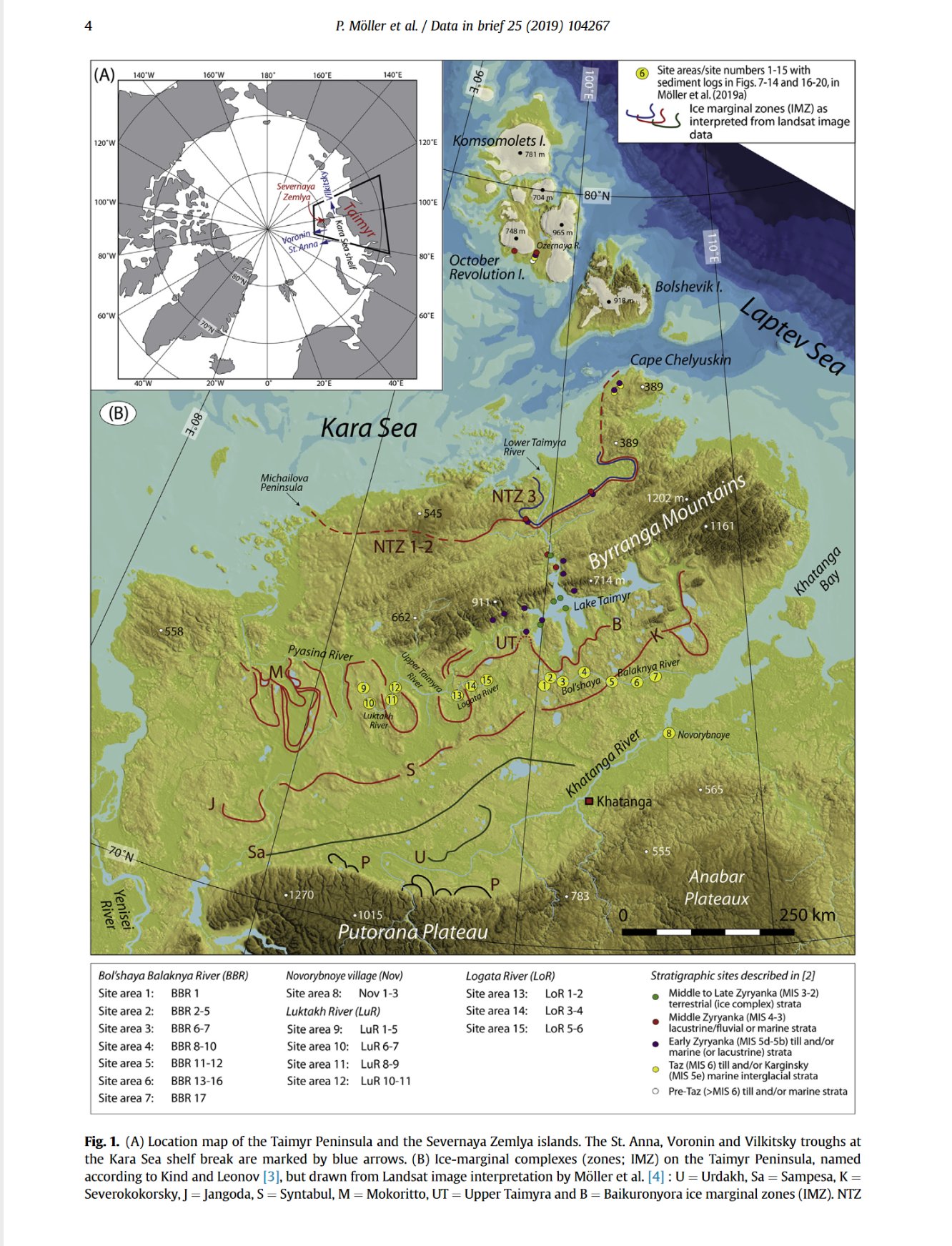Glacial history and palaeo-environmental change of southern Taimyr Peninsula, Arctic Russia, during the Middle and Late Pleistocene
New publication by Per Möller, Ívar Orn Benediktsson, Johanna Anjara, Ole Bennike, Martin Bernhardson, Svend Funder, Lena M. Håkansson, Geoffrey Lemdahl, Joseph M.Licciardi, Andrew S. Murray, Marit-SolveigSeidenkrantz

Abstract:
We here reconstruct a glacial and climate history of arctic NW Siberia for the last ~600,000 years, based on the stratigraphy and chronology of 35 studied river sections on the southern Taimyr Peninsula. From this stratigraphic mosaic we have identified four glacial events, marked by tills/glaciotectonics, which are intercalated with mainly marine sediments deposited in proglacial settings during transitions from glacial conditions into subsequent interglacials/interstadials. The traces of early shelf-based Kara Sea Ice Sheet (KSIS) glaciations in marine isotope stages (MIS) 12–14 and 8 are sparsely preserved, but these ice advances are suggested to have terminated far south into the central Siberian uplands, as also was the case with the younger Taz glaciation (MIS 6). The inception phase of the latter glaciation was complex, with ice advancing into a proglacial marine basin both from the south (Putorana – Anabar uplands) and the north. The deglaciation leading into the Karginsky interglacial (MIS 5e) was marked by the development of the southernmost ice-marginal zones (IMZs) on the Taimyr lowlands – the Urdakh and Sampesa IMZs. The most recent (late Pleistocene) glacial cycle is recorded by three successively smaller KSIS advances from the Kara Sea shelf onto Taimyr, of which only the first, during Early Zyryanka (MIS 5d), reached south of the Byrranga Mountains, with its maximum extent marked by the Jangoda – Syntabul – Severokokorsky IMZ. Retreat of the ice margin during MIS 5c-b was accompanied by deposition of glaciomarine sediment in the proglacial basin and deposition of large successions of delta sediments in the foothills of the Byrranga Mountains, reaching ≥100 m above present sea level. The region north of the Byrranga Mountains was subjected to two subsequent KSIS glaciations, during MIS 4 and MIS 2, while the area south of the Byrranga Mountains transitioned to a terrestrial environment from the Middle into the Lower Zyryanka, as evidenced by deposition of fluvial, aeolian and ice-complex (Yedoma) sediments.
